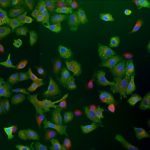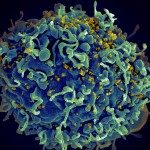About
Since 2020, highly pathogenic avian influenza A H5Nx viruses of clade 2.3.4.4b have spread from Eurasia to Africa and America through migrating aquatic birds and have spilled over to wild and domestic mammals, including livestock, with episodes of confirmed, or strongly suspected, mammal-to-mammal transmissions. Upon transmission to mammalian hosts, these viruses rapidly acquire key mammal adaptive mutation in the polymerase genes, which increases their pandemic potential. Full adaptation of avian influenza A viruses to humans also requires to escape the interferon-induced MxA protein, a potent antiviral protein that targets the nucleoprotein (NP). The 2.3.4.4b H5Nx viruses demonstrate a high genetic diversity for the internal gene cassette due to continuous reassortment events occurring with low pathogenic avian influenza viruses. We aim at investigating to what extent 2.3.4.4b H5Nx viruses and other avian influenza viruses of concern could acquire an MxA-resistant NP segment through genetic reassortment. We have selected a set of PB2 and PA segments representative of the predominant 2.3.4.4b H5Nx genotypes or avian H7/H9 viruses, and three NP segments representative of currently circulating MxA-resistant lineages. We will develop a competitive reverse genetic approach on MDCK cells stably expressing MxA, to test combinations of PB2, PA and NP segments. For biosafety reasons, we will use a system of single-cycle AIVs defective for the HA.







